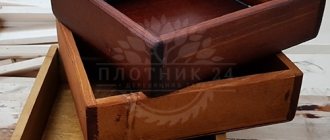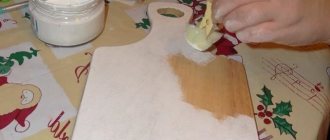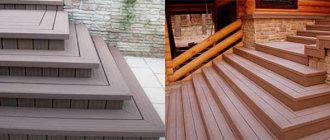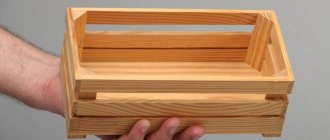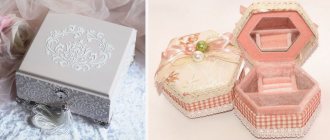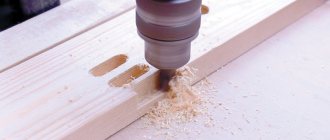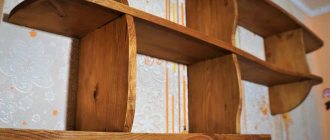When arranging a garden, specific designs are often used that effectively decorate the area. One of these elements is a wooden arch for the garden.
The design is not difficult at all if you approach the installation process carefully and creatively. To build it, it will be enough to familiarize yourself with the main stages of assembly.
Types and features
Before you begin choosing the design and selecting materials for the future product, you need to determine its location.
- It can stand separately, then it will be an isolated structure. It is often placed at the entrance to the garden, for example.
- Several combined structures will form a tunnel. But in this case, the garden area must match; in small areas it will look out of place.
- You can decorate an empty wall of the house, make a corner extension, then the decorative part will become its continuation. But still, more often pergolas - wooden canopies - are placed in this way.
Instagram @topgarden777
Instagram @danisartgarden
Instagram @knightfencing
Flower Market
Design Rules
When designing a future product, it is also important to take into account a number of points.
- Its height should be at least 2 meters so that the support does not look squat and cramped. And more than 3 meters, otherwise it will be too bulky and high.
- Width - at least one and a half meters. Otherwise, when the flowers grow, the structure will have an unkempt, neglected appearance.
- The model can be mobile, without support, then it can be easily moved around the site. But in this case, carefully choose a climbing plant; it should not be heavy.
- Don’t forget about aesthetics; in winter, the structure will stand without plants, so its appearance should not clutter or spoil the landscape.
- Forged products are good in a classic garden, and wooden ones are suitable for simple areas decorated in rustic or Provence style.
- Country cottage area
Making a wooden gate with your own hands: instructions from choosing the material to assembling the parts
How to choose a place to install a pergola
A pergola looks great in any part of a suburban area, but it would be rational to place it above garden paths. If you build a patio, a pergola will help decorate it and turn it into a “green room.” No matter where the pergola is located on the dacha plot, it will serve as the connecting link of the entire design of the plot.
Plants for pergola
In order for the pergola to become an integral part of the suburban area, it is planted with climbing plants. They can form a dense shadow, or they can let the sun's rays through. The most common plant for a pergola is the technical or ornamental grape vine.
The following plants also look interesting:
- hop,
- honeysuckle,
- wood plier,
- clematis,
- nasturtium,
- bindweed,
- Chinese lemongrass.
If the suburban area is located in the southern region, then wisteria or roses will grow well on the pergola.
Advice. Climbing plants that wrap around a pergola require regular and proper care. It is necessary to constantly feed them with minerals and nutrients, since such plants will be in an unprotected state from exposure to sunlight. If this is not done, then over time the plant will die, and it will be quite difficult to revive it.
Pergola compositions in suburban areas are often decorated with flower beds.
Metal arch
Almost every rose fan dreams of a forged flower arch in the garden, but making it with your own hands is very difficult. As an alternative material, corrugated reinforcement can be used.
Metal is stronger than wood and will last longer, plus it requires much less maintenance. However, keep in mind that in winter this design element does not look very picturesque.
Instagram @sambohjelm
Instagram @topgarden777
Instagram @topgarden777
Instagram @happy_inthegarden
Materials
- Reinforcement rods with a diameter of 10 mm and a length of 6 meters - 2 pieces. This is the basis.
- Reinforcement rods with a diameter of up to 6 mm and a length of up to 90 cm, depending on the distance between the supports. These rods are used to make jumpers that are attached between the arches.
- Enamel or primer for coating metal.
- A pipe bender will make installation easier.
Work order
- The first thing to do is bend two arcs. These will be the supports. The easiest way to do this is with a pipe bender. But you can try it manually.
- To do this, draw a circle on the ground. Drive the pins into the resulting circle; they will support the rod. The more pins, the smoother the bend will be. You can lay siding between the reinforcement and the pins, this will also make the process easier.
- You won’t be able to make an arc this way alone; you need an assistant. At the same time, start bending the reinforcement from the ends until the rod takes the desired shape.
- When the two support arcs are ready, drive them into the ground to a depth of approximately 45-60 cm.
- Align them using a metal strip that can be secured with wire. Control the level.
- Using this bar as a guide, you can weld transverse metal rods.
The procedure and features of the work are presented in the video below.
Trellis
Trellis are lattice structures that serve as vertical support for climbing plants. They can be made of metal or wood. As a rule, such structures are erected only for decorative purposes. They can be made free-standing or near the wall of a building in a suburban area. Trellis can be attached to the side walls of pergolas.
Wooden trellis
Wooden trellises are made from thin slats and framed with a wooden arch. This kind of arch does not have high strength. It is for this reason that you should not load such a structure with heavy plants - roses or grapes.
Summer cottage area decorated with trellises
Metal trellises are very durable structures. They can be made using elements of decorative forging. They look no worse than wooden trellises and perform similar functions. A pergola on a country plot is not only a decorative gardening structure on which plants climb. It can be large in size and used as a gazebo where the whole family can gather over a cup of tea.
From the branches
How to make a flower arch with your own hands with virtually no tools? Using natural materials, or rather twigs. In addition, it will be the most environmentally friendly option. Only materials should be purchased in the store, and not collected in the nearby forest.
Flexible wood species are best suited - willow, birch. The frame is made of wood or larger branches.
Instagram @katya_landesign
Instagram @thedomesticatedgardener
In this case, the only tools you will need are pruning shears, scissors, regular and for metal, for cutting threads or wire. With their help, the rods are attached to the frame.
Instagram @burtiandscout
Instagram @burtiandscout
Instagram @burtiandscout
Instagram @burtiandscout
The process is presented in the video:
But keep in mind that such an arch will not last you more than one season, so you should choose annual plants so that the work of growing them does not go in vain.
Pergola or gazebo
At the moment, almost every suburban area has a gazebo. Gazebos are considered very functional structures. They can be located a short distance from the house or adjacent to it, forming a kind of veranda or terrace.
Pergola-gazebo entwined with plants
Many people believe that a pergola is just a decorative arch. But that's not true. Pergolas can be either a free-standing decoration on a country plot, or they can be adjacent to the house and be large in size. What will be better used - a pergola or a gazebo? It all depends on the functional needs of these structures.
Wooden gazebo-pergola made of timber, attached to the house
Made of plastic
Not the most environmentally friendly option - made from plastic corrugated pipes. But it is definitely one of the cheapest, and in the photo it is almost impossible to distinguish it from metal.
Materials
To make such a structure you will need the following materials.
- Two pipes - to create longitudinal beams. Their length will correspond to the width of the structure, that is, it should not be less than 120 mm.
- Products made from PVC, polyethylene, and polypropylene are suitable. The last two types are easy to bend, so you can make a frame with an arc rather than a straight one.
- The shorter lengths will be used to create the support and cross beams.
- To connect the tubes to each other, adapters selected according to the diameter of the pipes are used.
Instagram @bland_design
Instagram @gabriana_nosyparker
Work order
- Long pipes are cut into several short ones to ensure connection with the cross beams and make the structure more stable.
- The pipes can be attached to each other either using glue or by heating.
- Since this is a very light structure, special attention is paid to the support and foundation. And then even a strong gust of wind will not be able to blow it away or overturn it.
- To strengthen the system, reinforcing pins are attached to the plastic support beams on the mounting foam. Allow to dry.
- These pins are deepened approximately 50 - 100 cm into the ground.
- The earth around is covered and compacted tightly.
The process of manufacturing such a structure from plastic can be studied in the video:
Plants for decoration
Plants for decoration should be able to easily withstand wintering or be annuals. Some designs are designed for fastening flower containers in which annuals (plants that bloom only one summer) are grown. But more often they choose perennial plants - lianas - decorative and fruit-bearing. The following types of plants are suitable for decoration:
- Ampelous container annuals and perennials - calibrachoa, petunia, pelargonium, strawberry, ivy, lobelia.
- Annual vines - morning glory, fire-red decorative bean, kobeya, thunbergia sweet pea.
- Perennial vines - climbing roses (climbing varieties Florentina, Paul Noel, Ghislaine de Feligonde, others), hops, maiden (wild) and fruit grapes (Amur hybrid varieties, Constance Spry, Zephirine Drouhin, Alpha, etc.).
- “Living” - when the structure is decorated using wood. But it is quite difficult to care for her. They are formed mainly on the basis of hawthorn, rowan, birch, serviceberry, and linden. You can buy a ready-made one, but it is expensive - the approximate price of a structure with rowan is about 200,000 rubles.
Combined arch
Very often you can find models made from several materials. The most popular is the combination of wood and metal. The supports are made of wood, and the upper arc is made of metal. Wood and plastic are combined using the same principle.
Instagram @justwood_krd
Instagram @justwood_krd
Structures with brick or stone columns - a base and a wooden top - look monumental. But such buildings are suitable for large plots with architecture in the same style. And heavy climbing plants. Selecting the right ones will be discussed further.
Materials
Typically, an arch is constructed to cover it with climbing plants from bottom to top. Choose from the following material:
- tree;
- vine;
- metal;
- plastic;
- brick.
On mini- and midi-sites, wooden openings with a height of 2.3-3.3 m, a width of one and a half, and a depth of 50-70 cm look better. Let’s make a choice on the tree.
Roses
Delicate fragrant buds will decorate any design. With the onset of cold weather, they must be covered with special material so that the plants do not suffer from severe frosts.
Owners of frequent households choose them because of the aroma and the wide variety of varieties and colors.
Metal
Forged products look stylish and original, but they are more expensive. Such options become luxurious decor. Craftsmen create garden arches from metal from rods of small thickness.
We recommend reading:
- A hedge on a property: TOP-best ideas on what to use to make a beautiful hedge on a plot. Photo, diagram, instructions, tips from the gardener
Do-it-yourself rock garden: step-by-step instructions on how to create a beautiful rock garden (145 photos and videos)
- DIY stone flowerbed - 140 photos of stylish and beautiful ideas on how to build a stone flowerbed
There is no need to prepare a base to install the model. To protect the structure from corrosion, special compounds are purchased.
Configuration
Structurally, the arches differ only in the design of the vault:
- arc;
- gable “house”;
- U-shaped design;
- semicircle;
- console.
With your own hands
Photos of these amazing compositions, pleasing to the eye, can be seen in many prestigious magazines. But don’t think that a flowering pergola or trellis structure is the lot of the elite. You can, of course, buy an arch for your garden or cottage in a store, but if you want, you can easily build it yourself. And, it should be noted that often a structure assembled independently looks no worse than the purchased one. The main thing is to know
At the dacha, for flowers, many people use the simplest building materials that are at hand. These can be metal pipes, wooden posts or beams.
It is always more pleasant to create beauty in your own area on your own. The arch can be placed either along the path or in the corner, separating a seating area with it.
Zoning
Arches are used to divide the area into functional parts. There is no longer a need to install fences to mark off certain areas.
It is enough to make a small structure that will delimit the space. It is installed between the garden and vegetable garden, in the yard and other places.
Integration into ready-made landscape design
When arranging an arch among established landscape locations, it is necessary to balance their sizes.
If it is necessary to emphasize the beauty of an alpine slide or fountain, it is necessary to achieve the so-called “frame effect” by choosing the size in such a way that the specified effect is maintained even when observed from a great distance.
Come up with your own design by studying the collection of photos of a garden arch.
Grape
The arch can simultaneously perform a decorative function and serve as a basis for weaving grapes. With the help of this plant, amazing compositions are obtained.
It is worth considering that the structure must withstand significant loads and not deform under the weight of the vine and grapes.
Clematis
The plant looks spectacular on arches and is easy to care for. You can use several varieties at once to decorate the structure.
Designers use clematis for vertical gardening. Plants create bright spots in the openings of arches and combine well with other colors.
Ivy
The plant does not require careful care. Soon it will surprise guests and owners with its magnificent view. Ivy creates a green cover to admire.
The shape of the plant can be easily adjusted by pruning. It will help hide a cozy corner in the garden from prying eyes. Ivy looks beautiful even in cold weather.
